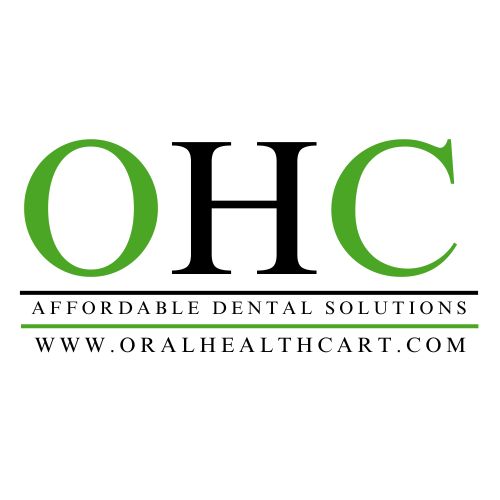Safety Protocols For Handling Dental Surgical Tools
The Dental Cart
.jpg)
Safety Protocols For Handling Dental Surgical Tools
Maintaining a sterile and safe environment is essential in any dental practice. One of the most crucial aspects of infection control and clinical efficiency is the safe handling of dental surgical tools. Improper handling can result in cross-contamination, injuries, procedural failures, or even legal liabilities. For any modern dental clinic, establishing and following strict safety protocols for these tools is not optional—it's a necessity.
At Oralhealth Cart, we believe that providing high-quality instruments goes hand in hand with promoting best practices in tool maintenance and handling. In this guide, we’ll walk you through the most important safety protocols every clinic should implement when using and maintaining dental surgical instruments.
Why Safety Protocols Matter in Dental Clinics
Dental surgical tools come into direct contact with blood, saliva, and other biological materials. Without proper handling and disinfection:
-
Cross-contamination can occur between patients.
-
Staff injuries from sharps can lead to serious infections.
-
Damage to instruments can lead to procedural complications.
-
Regulatory compliance may be compromised, leading to legal and financial repercussions.
Implementing clear protocols not only ensures patient and staff safety but also extends the lifespan of your equipment and maintains your clinic’s reputation.
1. Personal Protective Equipment (PPE) First
Before any surgical instrument is touched, the operator must be in full PPE. This includes:
-
Gloves (changed between patients)
-
Face masks or shields
-
Eye protection
-
Gowns or lab coats
PPE acts as the first barrier between the operator and potentially infectious materials. Always dispose of or sterilize PPE as per infection control guidelines after procedures.
2. Pre-Cleaning Tools Immediately After Use
Dental tools should never be left soiled after a procedure. Letting blood or debris dry on instruments makes cleaning and sterilization much harder and less effective.
Best Practice:
Rinse or soak tools in enzymatic solution immediately after use. Use soft brushes to remove visible debris under running water. Avoid abrasive materials that can scratch delicate surfaces.
3. Proper Sterilization Is Non-Negotiable
Every reusable surgical tool must be sterilized between uses. The gold standard and most efficient technique is utoclaving.
Tips:
-
Use autoclave-safe pouches to pack tools.
-
Do not overload the chamber—steam needs space to circulate.
-
Use chemical indicators inside the packs and biological indicators weekly to verify sterilization.
-
Before storing, let the instruments cool and dry fully.
At Oralhealth Cart, our instruments are designed to withstand repeated sterilization cycles without degradation—ensuring lasting performance.
4. Safe Handling of Sharps
Extreme caution should be used when using instruments such as scissors, elevators, scalpels, and needles. They must always be:
-
Passed in a neutral zone (not hand-to-hand)
-
Disposed of in puncture-proof sharps containers
-
Never recapped by hand unless using a safety technique
Wearing double gloves during surgery can also help reduce risk in case of accidental puncture.
5. Storage: Clean, Dry, and Labelled
Sterilized surgical tools should be stored in:
-
Closed, dust-free cabinets
-
Clearly labeled trays or containers
-
Organized by procedure type for quick access
Never store wet instruments. Moisture can lead to rust or microbial growth—even post-sterilization.
6. Instrument Logs and Tracking
Maintaining an instrument log helps you:
-
Track usage patterns
-
Know when tools need sharpening or replacement
-
Monitor sterilization cycles and compliance
-
Ensure accountability among team members
Digital tracking systems integrated with your clinic’s software can greatly improve this process.
7. Staff Training & Regular Audits
Safety protocols are only effective if every team member follows them consistently. Hold regular:
-
Training sessions for new staff
-
Monthly safety audits
-
Drills on emergency handling (e.g., accidental cuts, exposure incidents)
At Oralhealth Cart, we recommend including manufacturer's instructions in training so staff use tools as intended.
8. Maintenance of Surgical Tools
Even the highest-quality tools degrade without proper care. Regularly inspect instruments for:
-
Corrosion or rust
-
Loose joints or misalignment
-
Blunt edges that need sharpening
-
Discoloration or residue buildup
If a tool shows signs of damage, retire or repair it immediately. Using damaged instruments increases the risk of complications during surgery.
9. Follow Local & Global Guidelines
Adhering to protocols by authorities such as:
-
Dental Council of India (DCI)
-
WHO infection control standards
-
CDC (Centers for Disease Control and Prevention)
…ensures your clinic meets global best practices and avoids regulatory issues.
Oralhealth Cart: Your Partner in Safe Dentistry
We don’t just sell tools—we support dentists with high-grade, sterilization-ready surgical instruments, from elevators and forceps to apex locators and scalers. Every product is backed with:
-
Manufacturer certifications
-
Autoclave compatibility
-
Warranty and support
-
Guidance on handling and care
We believe safer instruments lead to safer clinics—and ultimately, healthier patients.
Establishing safety protocols for handling dental surgical tools isn’t just a box to check—it’s a mindset. From PPE to proper sterilization, from safe storage to continual staff training, every step ensures a safer environment for your team and patients.
Investing in high-quality tools from Oralhealth Cart, paired with solid safety practices, ensures your clinic delivers care that’s not just effective—but also trusted and respected.
Categories: Prostho Instruments


 Oralhealthcart Products
Oralhealthcart Products

